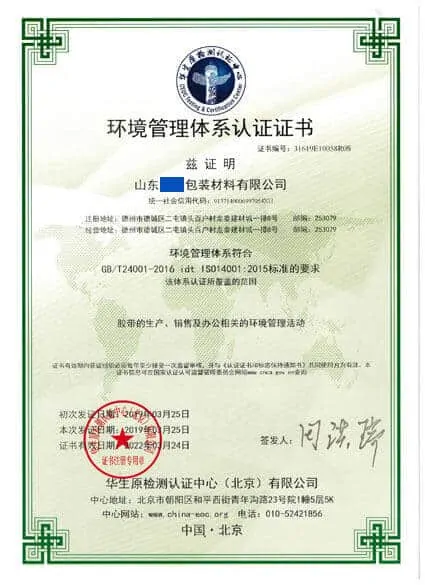What Is The China ISO 14001 Certificate
Background information about ISO 14001
As laws and regulations tighten and pressure on the environment caused by pollution, inefficient use of resources, improper waste management, climate change, degradation of ecosystems and loss of biodiversity increases, society’s expectations from organizations in terms of sustainable development, transparency and accountability have changed.

ISO14001 English CERTIFICATES

ISO14001 Chinese CERTIFICATES425-585
The ISO 14001 standard emerged in the context of organizations’ efforts to contribute to the sustainability of the “environmental pillar” through the implementation of environmental management systems and a systematic approach to environmental management.
Application Range
The ISO 14001 standard is applicable to all types and sizes of organizations, as well as to all geographical, cultural and social environments. It is a truly universal standard and is widely used on a global scale. This standard provides a framework to guide organizations to establish a self-discipline mechanism of environmental management in accordance with the PDCA (planning, implementation, inspection, improvement) model. From the leaders at the top to employees of every level, each member of an organization handles the relationship between their own development and environmental protection in an active and conscious spirit, responds to changing environmental conditions, continuously improves environmental performance, and carries out effective pollution prevention. Finally, it is possible for organizations to realize benign development.
Benefits
The environmental management system certification provided by CQC not only proves that an effective environmental management system is operating within the organization, but also helps the organization:
A) to protect the environment by preventing or reducing adverse environmental impacts;
B) to mitigate the possible adverse effects of environmental conditions on the organization;
C) to assist the organization in fulfilling its compliance obligations;
D) to enhance environmental performance;
E) to apply a life-cycle perspective to control or influence the way organizations design, manufacture, deliver, consume and discard products and services to prevent the unintended transfer of environmental impacts to other phases of the life cycle;
F) to implement environmentally friendly options that reinforce the organization’s market position for financial and operational gains; and
G) to exchange environmental information with relevant parties.


